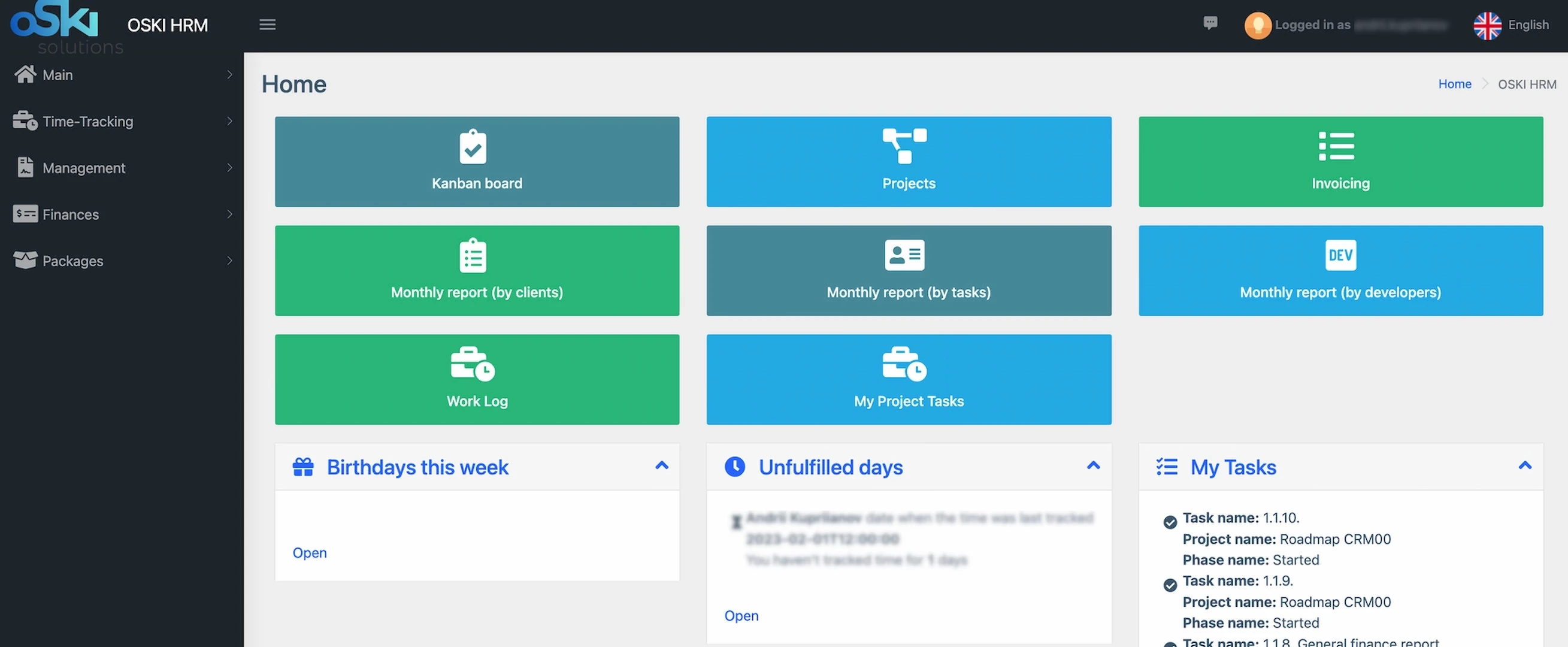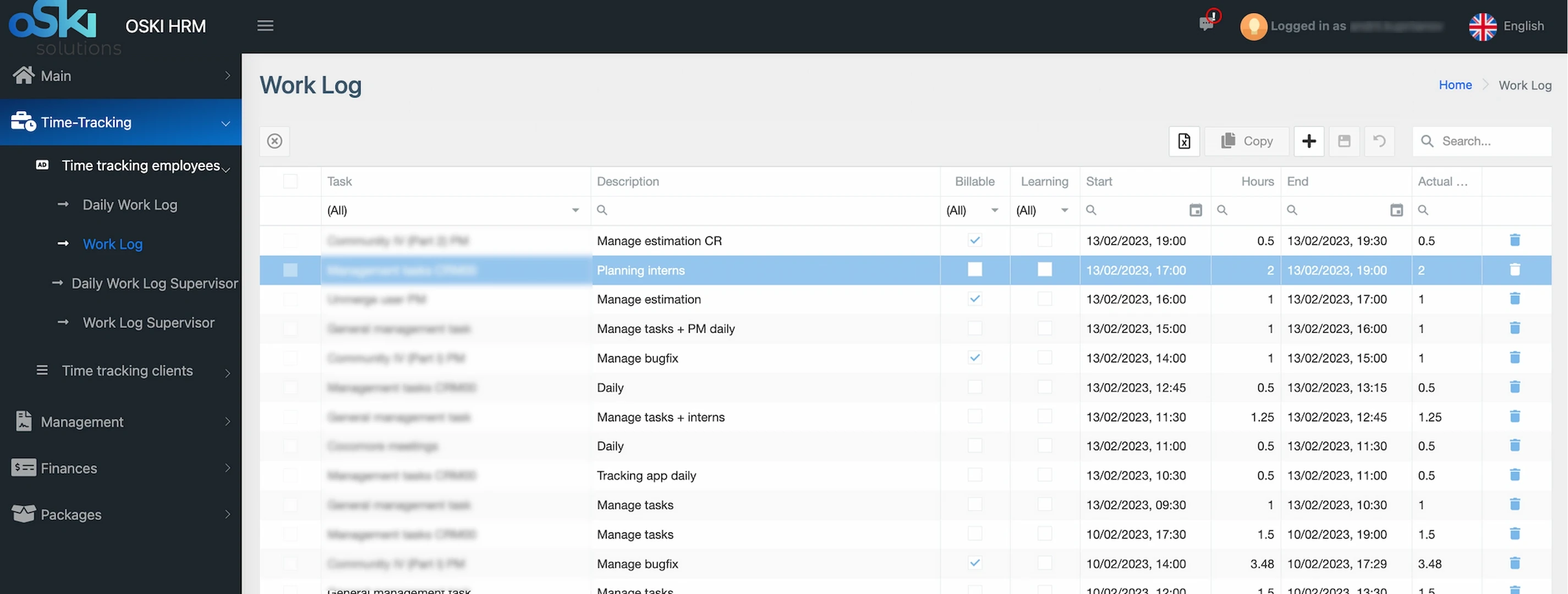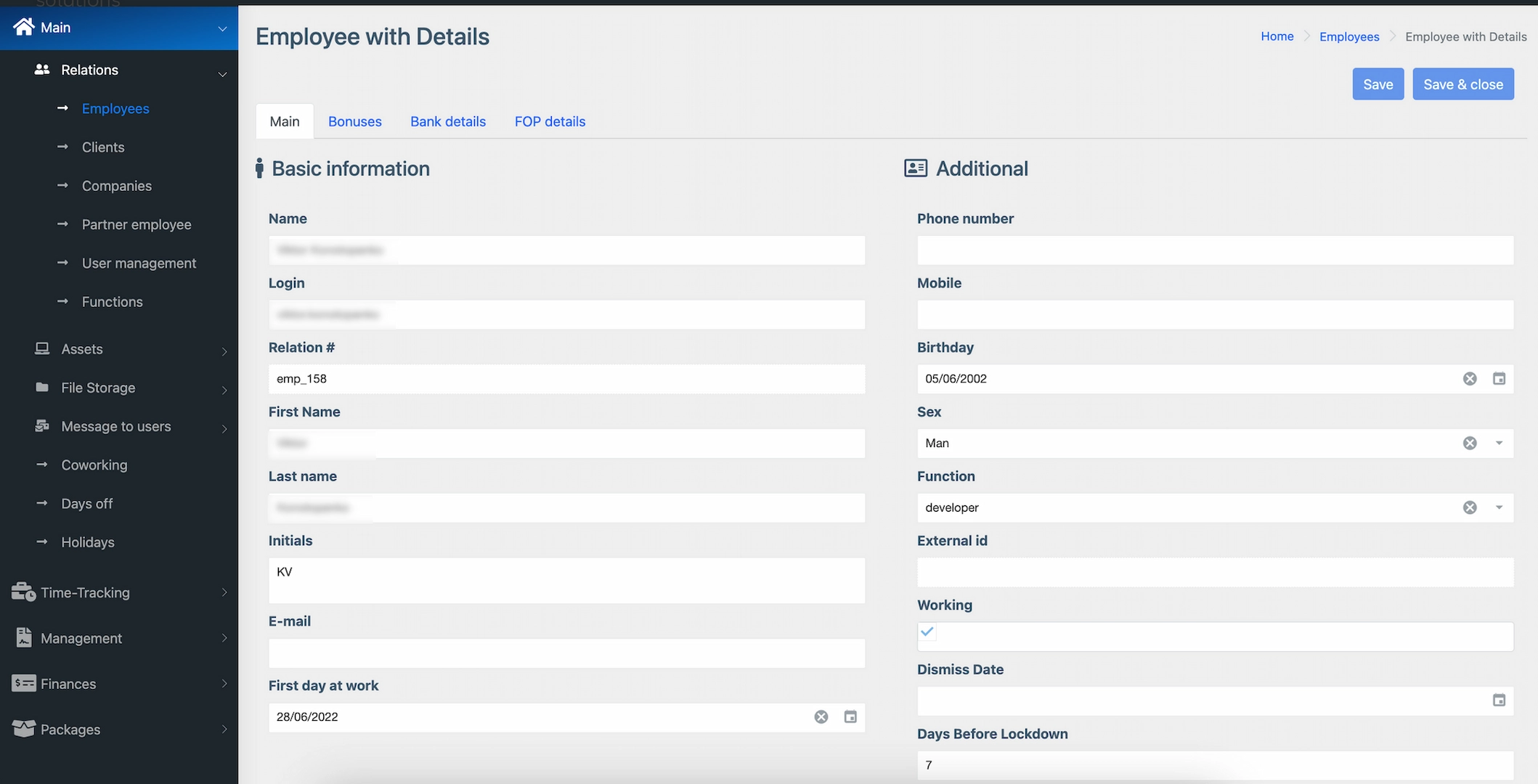

Our CRM System
Case Overview
Managing company operations efficiently has become increasingly complex. CRM emerged as a solution to address the growing needs of IT and product companies seeking to streamline their operations. The system was conceived as a response to the fragmented nature of existing management tools, offering a unified platform that brings together human resources, project management, and financial operations under one roof.
The Goal
The primary objective was to optimize how IT companies manage their day-to-day operations by creating a comprehensive system that eliminates the need for multiple software solutions. CRM aims to provide a single source of truth for all company operations, enabling better decision-making through accurate data collection and analysis. The system was designed to be highly adaptable to various IT company structures while maintaining ease of use and efficiency.

Challenges
The development team faced several significant hurdles in creating a comprehensive solution:
- Fragmented Information Management: The company was struggling with data scattered across multiple platforms, leading to inefficiencies and data inconsistencies
- Time Tracking Complexity: Existing systems failed to capture accurate time data, affecting project billing and resource allocation
- Resource Management Issues: Difficulty in efficiently distributing staff across multiple projects while maintaining optimal productivity
- Reporting Inefficiencies: Manual compilation of management reports was time-consuming and prone to errors
- Vacation and Leave Management: Complex calculations and tracking of employee time off and available days
- Project Visibility: Limited oversight of project progress and resource utilization
- Asset Tracking: Inefficient systems for managing company equipment and resources

The Process
The development team implemented a systematic approach to creating a comprehensive solution:
Relations Management System:
- Created robust account management for employees, clients, and partners
- Implemented relationship tracking between different entities
- Developed customizable access levels for different user types
Time Tracking Implementation:
- Designed a user-friendly time-logging interface
- Integrated automatic time calculation features
- Created project-specific time-tracking capabilities
Financial Systems Integration:
- Built automated invoice generation
- Integrated banking systems
- Developed comprehensive financial reporting tools
Human Resources Management:
- Created automated salary calculation systems
- Implemented bonus and compensation tracking
- Developed vacation and sick day management tools

The tech that we used
Our backend infrastructure was built using a robust combination of modern technologies:
Primary Backend: .NET Framework + ASP.NET Core
- Core Application Logic: Implemented using ASP.NET Core, leveraging its powerful dependency injection, MVC architecture, and microservices capabilities.
- RESTful API Development: Built with ASP.NET Web API, enabling seamless communication between front end and back end.
- Business Logic Layer: Utilized C# Services and Dependency Injection to handle complex business processes like salary calculations and project management.
- Security Implementation: ASP.NET Identity with JWT authentication and OAuth 2.0, ensuring secure access to system resources.
- Data Access Layer: Entity Framework Core (EF Core) for efficient database operations, ORM mapping, and transaction management.
Supporting Backend Services: Umbraco CMS + .NET Core
- Content Management: Integrated with Umbraco CMS for flexible content handling and dynamic page management.
- Real-time Features: Implemented using SignalR for real-time notifications and live data updates.
- Background Job Processing: Managed with Hangfire for scheduling background tasks like report generation and email dispatching.
- API Integration Layer: Built lightweight microservices using .NET Core for handling third-party integrations.
Frontend Technologies
Our frontend stack was chosen for optimal performance and user experience:
React.js + jQuery + TypeScript
- Application Structure: Built using React 18 with TypeScript for type safety and better code maintainability.
- State Management:
- Redux Toolkit for global state management.
- RTK Query for efficient API data fetching and caching.
- React Query for complex data synchronization
Result in numbers
- Project Management Streamlining: 80% faster project setup and resource allocation, reducing project initiation time from days to hours
- Financial Processing: 90% reduction in invoice processing time, with automated generation and validation saving 12 hours per week for accounting staff
- Resource Allocation: 45% improvement in resource utilization across projects through better visibility and planning tools
- HR Process Efficiency: 70% faster vacation and sick leave processing, reducing approval time from 2 days to 4 hours
- Employee Onboarding: 65% reduction in time spent on new employee setup and system access configuration, from 2 days to 6 hours
- System Adoption: 92% of employees actively use the system daily within the first month of implementation
- Billing Accuracy: 75% reduction in billing errors, leading to 40% faster payment collection
The system has successfully transformed how IT companies manage their operations, providing a unified platform that handles everything from human resources to project management and financial operations. Its comprehensive approach has eliminated the need for multiple systems while providing accurate, real-time data for better decision-making.


